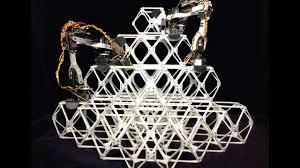
Breaking News
 Charlie's Killer Was MKUltra'd?
Charlie's Killer Was MKUltra'd?
 Doctors are finally admitting that biopsies Spread Cancer…
Doctors are finally admitting that biopsies Spread Cancer…
 We MUST keep talking about this, demand Voter ID. Joe Rogan and Elon Musk on Fraud
We MUST keep talking about this, demand Voter ID. Joe Rogan and Elon Musk on Fraud
 Nick Shirley exposes there are 1,200 medical transport companies in Minnesota.
Nick Shirley exposes there are 1,200 medical transport companies in Minnesota.
Top Tech News
 The First Production All-Solid-State Battery Is Here, And It Promises 5-Minute Charging
The First Production All-Solid-State Battery Is Here, And It Promises 5-Minute Charging
 See inside the tech-topia cities billionaires are betting big on developing...
See inside the tech-topia cities billionaires are betting big on developing...
 Storage doesn't get much cheaper than this
Storage doesn't get much cheaper than this
 Laser weapons go mobile on US Army small vehicles
Laser weapons go mobile on US Army small vehicles
 EngineAI T800: Born to Disrupt! #EngineAI #robotics #newtechnology #newproduct
EngineAI T800: Born to Disrupt! #EngineAI #robotics #newtechnology #newproduct
 This Silicon Anode Breakthrough Could Mark A Turning Point For EV Batteries [Update]
This Silicon Anode Breakthrough Could Mark A Turning Point For EV Batteries [Update]
 Travel gadget promises to dry and iron your clothes – totally hands-free
Travel gadget promises to dry and iron your clothes – totally hands-free
 Perfect Aircrete, Kitchen Ingredients.
Perfect Aircrete, Kitchen Ingredients.
 Futuristic pixel-raising display lets you feel what's onscreen
Futuristic pixel-raising display lets you feel what's onscreen
 Cutting-Edge Facility Generates Pure Water and Hydrogen Fuel from Seawater for Mere Pennies
Cutting-Edge Facility Generates Pure Water and Hydrogen Fuel from Seawater for Mere Pennies
Small assembler robots work together to build large structures

Researchers from MIT have created prototype assembly robots that can build small structures on their own or work together to create bigger ones.
The idea behind Benjamin Jenett's doctoral thesis is that, instead of producing components at separate locations and shipping them to a different manufacturing plant for final assembly, the whole thing could be constructed in the same place by small robots from a pool of identical pieces. These so-called Assembler Robots have been dubbed BILL-E (Bipedal Isotropic Lattice Locomoting Explorer) and could find applications in aircraft construction, bridge building and might even erect whole buildings from the ground up.
Working with Amira Abdel-Rahman, Kenneth Cheung (who now works for NASA's ARMADAS project that's looking at designing robots to build a lunar base) and Professor Neil Gershenfeld of MIT's Center for Bits and Atoms, Jenett has now reached the prototype stage of development.
The robots take the form of a hinged arm with grippers at either end to clamp onto three-dimensional blocks or units – called voxels – that are used to build the structures. These voxels serve as the construction equivalent of pixels in an image, with an object being built up one voxel at a time to create a complete structure.



